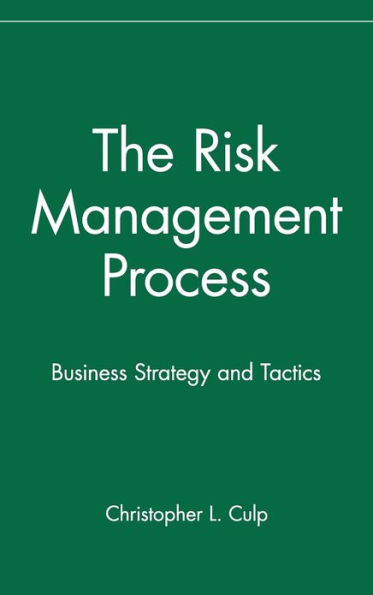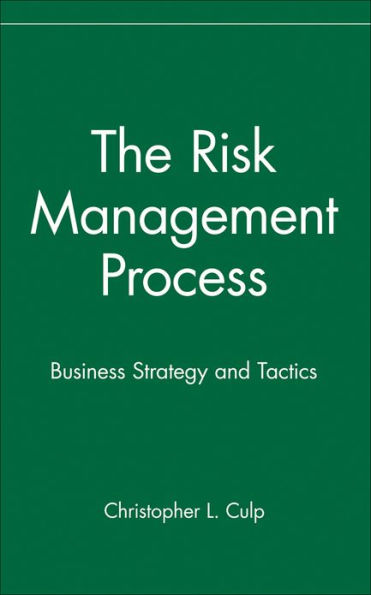The Risk Management Process: Business Strategy and Tactics
Integrates essential risk management practices with practical corporate business strategies
Focusing on educating readers on how to integrate risk management with corporate business strategy-not just on hedging practices-The Risk Management Process is the first financial risk management book that combines a detailed, big picture discussion of firm-wide risk management with a comprehensive discussion of derivatives-based hedging strategies and tactics.
An essential component of any corporate business strategy today, risk management has become a mainstream business process at the highest level of the world's largest financial institutions, corporations, and investment management groups. Addressing the need for a well-balanced book on the subject, respected leader and teacher on the subject Christopher Culp has produced a well-balanced, comprehensive reference text for a broad audience of financial institutions and agents, nonfinancial corporations, and institutional investors.
1101187263
Focusing on educating readers on how to integrate risk management with corporate business strategy-not just on hedging practices-The Risk Management Process is the first financial risk management book that combines a detailed, big picture discussion of firm-wide risk management with a comprehensive discussion of derivatives-based hedging strategies and tactics.
An essential component of any corporate business strategy today, risk management has become a mainstream business process at the highest level of the world's largest financial institutions, corporations, and investment management groups. Addressing the need for a well-balanced book on the subject, respected leader and teacher on the subject Christopher Culp has produced a well-balanced, comprehensive reference text for a broad audience of financial institutions and agents, nonfinancial corporations, and institutional investors.
The Risk Management Process: Business Strategy and Tactics
Integrates essential risk management practices with practical corporate business strategies
Focusing on educating readers on how to integrate risk management with corporate business strategy-not just on hedging practices-The Risk Management Process is the first financial risk management book that combines a detailed, big picture discussion of firm-wide risk management with a comprehensive discussion of derivatives-based hedging strategies and tactics.
An essential component of any corporate business strategy today, risk management has become a mainstream business process at the highest level of the world's largest financial institutions, corporations, and investment management groups. Addressing the need for a well-balanced book on the subject, respected leader and teacher on the subject Christopher Culp has produced a well-balanced, comprehensive reference text for a broad audience of financial institutions and agents, nonfinancial corporations, and institutional investors.
Focusing on educating readers on how to integrate risk management with corporate business strategy-not just on hedging practices-The Risk Management Process is the first financial risk management book that combines a detailed, big picture discussion of firm-wide risk management with a comprehensive discussion of derivatives-based hedging strategies and tactics.
An essential component of any corporate business strategy today, risk management has become a mainstream business process at the highest level of the world's largest financial institutions, corporations, and investment management groups. Addressing the need for a well-balanced book on the subject, respected leader and teacher on the subject Christopher Culp has produced a well-balanced, comprehensive reference text for a broad audience of financial institutions and agents, nonfinancial corporations, and institutional investors.
125.0
In Stock
5
1

The Risk Management Process: Business Strategy and Tactics
624
The Risk Management Process: Business Strategy and Tactics
624Hardcover
$125.00
125.0
In Stock

Product Details
| ISBN-13: | 9780471405542 |
|---|---|
| Publisher: | Wiley |
| Publication date: | 04/06/2001 |
| Series: | Wiley Finance , #81 |
| Pages: | 624 |
| Product dimensions: | 6.10(w) x 9.49(h) x 1.42(d) |
About the Author
From the B&N Reads Blog



